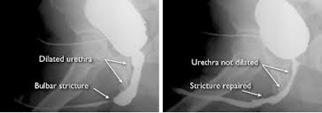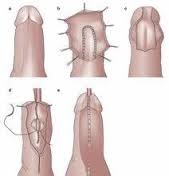 Urethroplasty is the repair of scar tissue located in your urinary channel from the bladder to out the penis. This scar tissue can occur after an injury such as from a prior surgery, catheter placement or a sexually transmitted disease. When you experience a buildup of scar tissue you will notice a slowing of your urinary stream.
Urethroplasty is the repair of scar tissue located in your urinary channel from the bladder to out the penis. This scar tissue can occur after an injury such as from a prior surgery, catheter placement or a sexually transmitted disease. When you experience a buildup of scar tissue you will notice a slowing of your urinary stream.
There have been cases where the urine is unable to come out due to the blockage. If you experience a slowing or absence of urine schedule an appointment with your urologist immediately.
How Will the Urologist Determine if I Have a Blockage?
Before you are scheduled for surgery your urologist will have you undergo x-rays of your urethra to determine where the scar tissue is located. You may be asked to do other tests such as uroflow test, urodynamics, or cystoscopy, depending upon your condition.
How is the Blockage Repaired?
In an urethroplasty the scar tissue is either removed or the area is enlarged through a cut in the skin. Then a small drainage tube called a catheter is left in place to allow the drainage of urine, while the area treated heals. Dr. Melman usally performs the urethroplasty urologic surgery as an outpatient.
Post Urethroplasty after Care
After the procedure you may have some mild discomfort, which can be relieved with a prescribed pain medication. After the urethroplasty you may have some swelling which can last for a few weeks. The catheter will remain in the penis for 10 to 20 days. Keep the catheter clean and tape it to your skin to prevent accidental removal or irritation. Use ice packs placed on your scrotal/penis to decrease the swelling for the first 48 hours. Don’t place the ice directly on the skin, instead wrap the ice pack in a towel and leave it on for a maximum of around 20 minutes at a time.
You may see a small amount of blood in your urine or on your dressing for about 72 hours. You may take a shower between 48-72 hours after the procedure. It is recommended to refrain from tub baths and soaking for at least 2 weeks after the procedure. Dr. Melman will often recommend you wear a scrotal support for at least one week after surgery. You may return to normal activities as soon as you are comfortable. Do not do any heavy lifting (20 pounds or more) until you are given permission. Before you resume sexual activity discuss it first with Dr. Melman.
When to Notify your Urologist after urethrolplasty?
Contact us after surgery if you have severe swelling, have a large amount of drainage, the area has increased redness, is tender around the incision site, or you have a fever and/or chills. Contact us if you have any concern of complications. If your catheter isn’t draining try changing positions or drink more fluids. If it still doesn’t drain call immediately.

